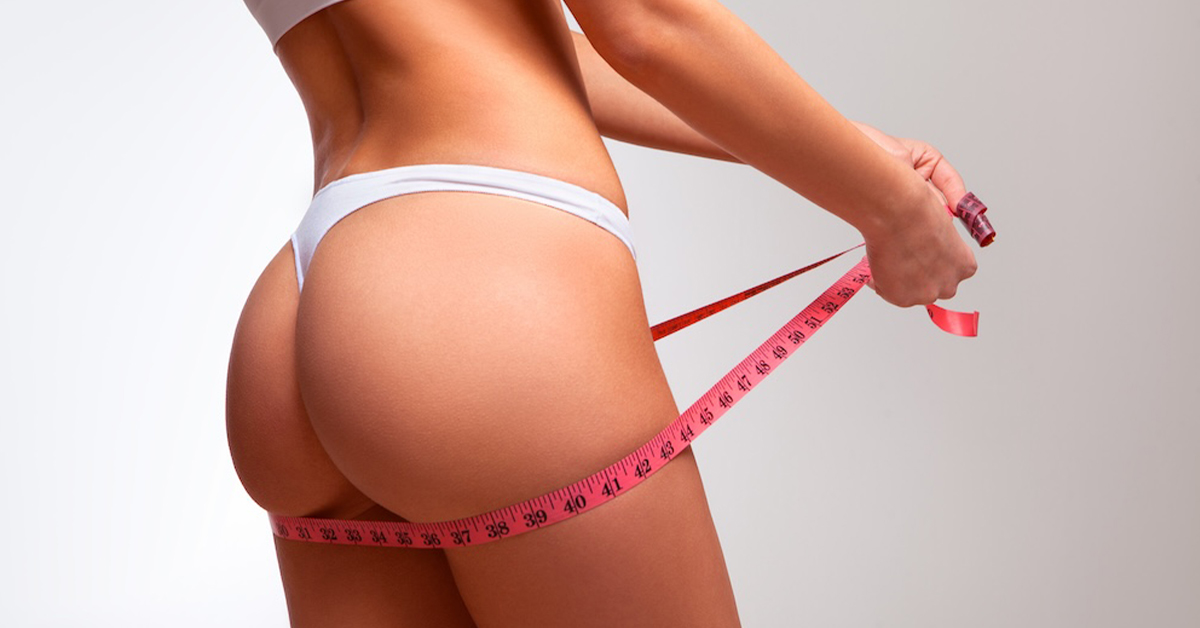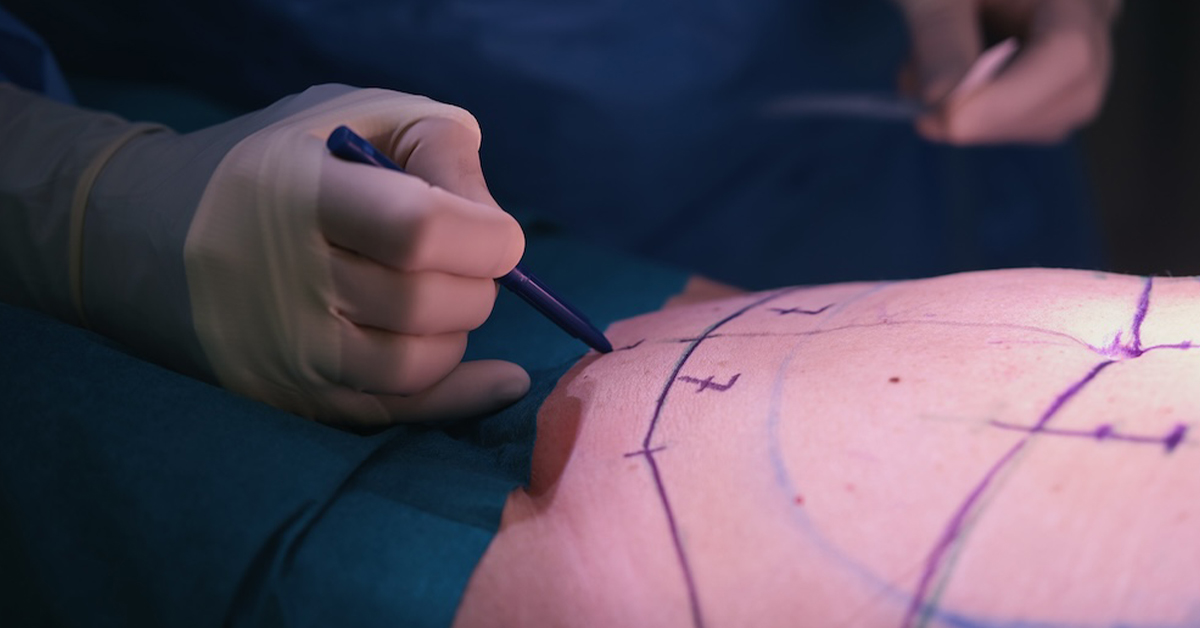Effective Gynecomastia Self-Care Tips for Enhanced Wellness
Gynecomastia self-care is crucial for individuals looking to enhance their wellness and regain confidence. While there are treatment options available, self-care tips can play an important role in reducing symptoms and promoting overall well-being.
Avoiding endocrine disruptors is an essential self-care tip. These chemicals, found in certain foods, beverages, and personal care products, can interfere with hormone levels in the body. Choosing whole foods like fruits, vegetables, legumes, and whole grains can support healthy hormone levels.
Regular exercise is another vital self-care tip for managing gynecomastia. Both aerobic exercise and strength training have been shown to increase testosterone production and support overall health. Managing stress levels is also important, as stress can increase cortisol and lead to fat storage and testosterone conversion to estrogen. Finding healthy ways to manage stress, such as exercise, sleep, and a balanced diet, can help maintain healthy testosterone levels.
Addressing the underlying cause of gynecomastia with the help of a healthcare provider is essential. Treatment options may include modifications to medications, hormone therapy, or surgery, depending on the cause.
When it comes to diet, certain foods can be beneficial for gynecomastia. These include fish oil, which is rich in antioxidants and omega-3 fatty acids, and foods high in zinc, such as cashews, raisins, and chickpeas. Vitamin E-rich foods like sunflower seeds and almonds can help fight free radicals, while milk thistle can support liver function. Foods rich in vitamin D, like mushrooms and fortified dairy products, can also be beneficial.
On the other hand, there are certain foods to avoid for gynecomastia. Alcohol can increase fat storage and limit the liver’s ability to eliminate excess estrogen. Soy products, which contain phytoestrogens that mimic human estrogen, should also be avoided. Processed foods, beetroot, frozen foods, and fried foods are best avoided as well.
- Avoid endocrine disruptors found in certain foods, beverages, and personal care products
- Choose whole foods to support healthy hormone levels
- Engage in regular exercise, including aerobic and strength training
- Manage stress levels through healthy habits like exercise, sleep, and a balanced diet
- Consult with a healthcare provider to address the underlying cause and explore treatment options
Understanding Gynecomastia and its Causes
Gynecomastia refers to the enlargement of male breast tissue caused by hormonal imbalances or an excess of fat tissue. This condition can be both physically and emotionally distressing for individuals, impacting their self-confidence and overall well-being. Understanding the causes of gynecomastia is crucial in order to effectively manage and seek appropriate treatment for this condition.
Hormone Imbalance: Hormonal imbalances, particularly an increase in estrogen levels or a decrease in testosterone levels, can contribute to gynecomastia. These imbalances can occur during different stages of life, such as puberty or aging, and can be triggered by various factors like certain medications, genetic conditions, or underlying health issues.
Excess Fat Tissue: In some cases, gynecomastia may be the result of excess fat tissue in the breast area. This can be influenced by factors such as obesity, poor diet, and a sedentary lifestyle. Losing weight and adopting a healthy lifestyle can help reduce fat tissue and alleviate the symptoms of gynecomastia.
Medications and Steroids: Certain medications and anabolic steroids can also contribute to the development of gynecomastia. These substances can disrupt hormone balance and lead to the enlargement of male breast tissue. It is important to be cautious when taking any medications or supplements and consult a healthcare professional if experiencing any adverse effects.
It is crucial to address the underlying cause of gynecomastia in order to effectively manage and treat the condition. This may involve lifestyle changes, such as adopting a healthy diet and engaging in regular exercise, to promote hormone balance and reduce excess fat tissue. Additionally, seeking medical advice is essential for exploring treatment options that may include hormone therapy or, in severe cases, surgery. An individualized approach is key to managing gynecomastia effectively and improving overall well-being.
| Causes | Symptoms | Treatment Options |
|---|---|---|
| Hormonal imbalances | Breast tenderness, breast enlargement | Lifestyle changes, hormone therapy, surgery |
| Excess fat tissue | Enlarged breast area, fatty deposits | Weight loss, healthy diet, exercise |
| Medications and steroids | Changes in breast tissue, nipple discharge | Modification of medications, discontinuation of steroids |
“Understanding the causes of gynecomastia is the first step towards effective management and treatment. By addressing hormone imbalances, reducing excess fat tissue, and being cautious with medications and steroids, individuals can take control of their condition and improve their overall well-being.”
Gynecomastia and Mental Health
Gynecomastia can have a significant impact on an individual’s mental health, leading to feelings of embarrassment, self-consciousness, and decreased self-esteem. It is important to provide support and understanding to those affected by this condition, as it can greatly impact their quality of life. Seeking professional help from a mental health specialist or support groups can provide individuals with the necessary tools to cope with the emotional aspects of gynecomastia.
The Impact of Lifestyle on Gynecomastia
Making certain lifestyle changes is crucial in managing gynecomastia and promoting overall wellness. Your lifestyle choices can have a significant impact on the development and progression of gynecomastia, so it’s important to be mindful of certain factors that can contribute to this condition.
One of the key factors to consider is alcohol intake. Excessive alcohol consumption can increase fat storage in the body and limit the liver’s ability to metabolize excess estrogen, leading to the development and enlargement of breast tissue. It’s advisable to moderate your alcohol consumption or avoid it altogether to manage gynecomastia effectively.
Illicit drug use is another lifestyle factor to be aware of. Some drugs, such as marijuana and anabolic steroids, can disrupt hormonal balance and contribute to gynecomastia. If you’re using illicit drugs, it’s essential to seek professional help to overcome addiction and restore hormonal balance.
In addition to alcohol and drug intake, making positive lifestyle changes can support hormone balance and reduce fat tissues. Maintaining a healthy weight through regular exercise and a balanced diet is crucial. Exercise, particularly aerobic and strength training exercises, can increase testosterone production and promote overall health. Combining exercise with stress management techniques, such as meditation or yoga, can help control cortisol levels and reduce fat storage.
Remember, it’s essential to consult with a healthcare professional for personalized advice and treatment options. They can help you address the underlying cause of gynecomastia and provide guidance on the most suitable lifestyle changes for your specific situation. By making conscious choices and adopting a healthy lifestyle, you can effectively manage gynecomastia and enhance your overall wellness.
Non-Surgical Treatment Options for Gynecomastia
Non-surgical treatments, such as hormone therapies, can be effective in managing gynecomastia. These options offer alternatives to surgical intervention and can help reduce the symptoms of male breast enlargement. By addressing hormone imbalances and targeting the underlying cause of gynecomastia, non-surgical treatments aim to alleviate physical discomfort and improve overall wellness. It is important to consult with a healthcare professional to determine the most suitable treatment plan for your individual needs.
Hormone therapies are commonly used in the management of gynecomastia. Medications, such as raloxifene and tamoxifen, which are typically prescribed for breast cancer treatment, have shown promise in reducing the size and tenderness of male breast tissue. These medications work by blocking the estrogen receptors in the breast tissue, thereby reducing the effects of estrogen on breast development. Hormone therapy can be an effective option, but it is essential to follow a healthcare professional’s guidance and monitor for any potential side effects.
| Treatment Options | Benefits | Considerations |
|---|---|---|
| Hormone Therapies | – Reduction in breast tissue size – Improvement in tenderness – Potential non-surgical alternative | – Potential side effects – Requires medical supervision |
Self-Care Tip 1 – Dieting for Gynecomastia
A healthy diet plays a key role in managing gynecomastia, with weight loss and reduction in body fat being crucial factors. By making smart dietary choices, you can support your hormone balance and reduce glandular tissues, helping to alleviate symptoms and enhance overall wellness.
When it comes to your diet, it’s important to avoid endocrine disruptors – chemicals that can interfere with hormone levels. These disruptors can be found in certain foods, beverages, and personal care products. To minimize your exposure, focus on consuming whole foods such as fruits, vegetables, legumes, and whole grains. These nutrient-rich options can help support healthy hormone levels in your body.
Additionally, incorporating specific foods into your diet can provide further benefits. Foods rich in iodine, such as fish, dairy, grains, and seaweed, can support the health of your glandular tissues. Opt for iodine-rich options like salmon and tuna, as these can contribute to their anti-inflammatory properties.
| Iodine-Rich Foods | Benefits |
|---|---|
| Salmon | Rich in omega-3 fatty acids and anti-inflammatory properties |
| Tuna | Provides iodine and supports glandular tissues |
| Dairy | Good source of iodine and other essential nutrients |
| Grains | Contain iodine and provide energy for the body |
| Seaweed | Rich in iodine and antioxidants |
When it comes to managing gynecomastia through diet, it’s important to consult with a healthcare professional for personalized advice and guidance. They can help you develop a diet plan that suits your specific needs, taking into account factors such as your overall health, underlying conditions, and any medications you may be taking.
Remember, dieting is just one aspect of self-care for gynecomastia. Incorporating regular exercise, stress management techniques, and seeking medical care for the underlying cause are also crucial steps on the path to enhanced wellness.
Self-Care Tip 2 – Exercise for Gynecomastia
Regular exercise, including cardio and targeted chest exercises, is essential for managing gynecomastia. Exercise not only helps to reduce overall body fat and promote weight loss but also specifically targets the chest area, helping to strengthen and tone the muscles. By incorporating both cardio and targeted chest exercises into your workout routine, you can effectively manage gynecomastia and improve your overall physique.
The Power of Cardio
Cardiovascular exercises, such as running, swimming, cycling, or brisk walking, are excellent for burning calories and shedding excess body fat. Engaging in at least 30 minutes of moderate-intensity cardio exercises most days of the week can help to boost your metabolism, increase fat burning, and promote weight loss. This can be particularly beneficial for individuals with gynecomastia, as reducing overall body fat can help to minimize the appearance of enlarged breast tissue.
Targeted Chest Exercises
In addition to cardio, incorporating targeted chest exercises into your workout routine can help to strengthen the chest muscles and improve the overall appearance of the chest area. Some effective exercises include push-ups, standing cable fly, plank to push-up, sprints, bench press, reverse cable pulls, and dumbbell exercises. These exercises help to target and tone the chest muscles, leading to a firmer and more sculpted chest.
Remember to consult with a healthcare professional or certified trainer before starting any exercise regimen, especially if you have an underlying medical condition or are new to exercise. They can provide guidance and tailor a workout plan to meet your specific needs and limitations.
| Exercise | Description |
|---|---|
| Push-ups | A classic exercise that targets the chest muscles. Begin in a plank position with your hands slightly wider than shoulder-width apart. Lower your body by bending your elbows, keeping your back and legs straight, and push back up to the starting position. |
| Standing Cable Fly | Stand in the center of a cable machine with a D-handle attached to each cable. Hold the handles with your arms extended out to the sides. Keeping a slight bend in your elbows, bring your hands together in front of your chest, squeezing your chest muscles. Slowly return to the starting position. |
| Plank to Push-up | Start in a high plank position with your hands directly under your shoulders and your body in a straight line. Lower one arm at a time to the elbow plank position, then push back up to the starting position, one arm at a time, maintaining a strong core throughout. |
| Sprints | A high-intensity cardio exercise that can help burn calories and reduce overall body fat. Find a space where you can sprint for short distances, then rest and repeat. Aim for maximum effort during each sprint. |
| Bench Press | Lie on a flat bench with a barbell or dumbbells in your hands, palms facing forward, and arms extended. Lower the weight towards your chest while keeping your elbows at a 90-degree angle. Push the weight back up to the starting position, squeezing your chest muscles. |
| Reverse Cable Pulls | Stand facing a cable machine with a straight bar attached to the low pulley. Hold the bar with an overhand grip, palms facing down, and arms extended in front of you. Pull the bar towards your chest, squeezing your shoulder blades together. Slowly release and return to the starting position. |
| Dumbbell Exercises | Various dumbbell exercises, such as chest press, incline press, and flys, can effectively target and strengthen the chest muscles. Start with a weight that challenges you but allows for proper form, and gradually increase the weight as you get stronger. |
By incorporating regular cardio exercises and targeted chest exercises into your fitness routine, you can effectively manage gynecomastia and improve the overall appearance of your chest area. Remember to start slowly, listen to your body, and consult with a healthcare professional or certified trainer for personalized advice and guidance. With commitment and consistency, you can achieve the results you desire and regain your confidence.
Self-Care Tip 3 – Stress Management
Effective stress management plays a vital role in maintaining hormone balance and managing gynecomastia. When you experience chronic stress, your body releases cortisol, a stress hormone that can contribute to fat storage and interfere with testosterone production. This imbalance can exacerbate gynecomastia symptoms and make it harder to achieve your wellness goals.
To effectively manage stress, incorporating various strategies into your daily routine can be beneficial. Regular exercise, such as cardio or strength training, can help decrease cortisol levels and increase testosterone production. Aim for at least 30 minutes of exercise most days of the week to reap these benefits.
Sleep is another important aspect of stress management. Aim for 7-9 hours of quality sleep each night to allow your body to recover and regulate hormone levels. Establishing a relaxing bedtime routine, avoiding electronic devices before bed, and creating a comfortable sleep environment can all contribute to better sleep quality.
In addition to exercise and sleep, maintaining a healthy diet can also help manage stress. Consuming nutrient-rich foods, such as fruits, vegetables, whole grains, and lean proteins, can provide essential vitamins and minerals that support your body’s ability to cope with stress. Avoiding excessive caffeine and sugar can also help stabilize energy levels and prevent spikes and crashes that can contribute to stress.
| Stress Management Tips | Key Points |
|---|---|
| Regular exercise | Reduces cortisol levels and increases testosterone production |
| Adequate sleep | Helps regulate hormone levels and supports stress recovery |
| Healthy diet | Provides essential nutrients for stress management |
By incorporating stress management strategies into your daily routine and prioritizing self-care, you can support hormone balance and effectively manage gynecomastia symptoms. Remember to consult with a healthcare professional for personalized advice and treatment options specific to your situation.
Seeking Medical Care for Gynecomastia
It is crucial to seek medical care for gynecomastia to determine and address the underlying cause effectively. Consulting with a healthcare provider can provide valuable insights into the factors contributing to male breast enlargement and help guide appropriate treatment options. Depending on the individual case, a healthcare professional may suggest a variety of interventions, including modifications to medications, hormone therapy, or surgery.
When seeking medical care for gynecomastia, it is important to undergo a thorough evaluation to identify any potential underlying medical conditions that may be contributing to the condition. This evaluation may involve physical examinations, hormone level testing, and imaging studies to assess the breast tissue and rule out any malignancies or other abnormalities.
In some cases, the underlying cause of gynecomastia may be related to hormonal imbalances, such as an increase in estrogen or a decrease in testosterone levels. In such instances, hormone therapy may be recommended to restore the hormonal balance and reduce the size of the breast tissue. This can involve the use of medications such as selective estrogen receptor modulators like raloxifene or tamoxifen, which have been shown to be effective in reducing breast tissue in gynecomastia cases.
For individuals with severe cases of gynecomastia or cases that do not respond to other treatment options, surgery may be considered. Surgical interventions such as Liposuction or Male Breast Reduction Surgery can help remove excess breast tissue and restore a more masculine chest contour. It is important to discuss the potential risks, benefits, and expected outcomes of surgery with a qualified healthcare professional before making a decision.
| Treatment Options for Gynecomastia | Pros | Cons |
|---|---|---|
| Medication | – Non-invasive option – May reduce breast tissue size – Can address hormonal imbalances | – Potential side effects – Long-term use may be required – Limited effectiveness in certain cases |
| Surgery | – Provides immediate results – Removes excess breast tissue – Improves chest contour | – Invasive procedure – Risks associated with anesthesia and surgery – Potential scarring and recovery time |
It is important to remember that seeking medical care for gynecomastia is essential for proper diagnosis, treatment, and monitoring of the condition. Only a healthcare professional can provide personalized advice and guide individuals towards the most suitable treatment options based on their specific needs and circumstances.
Foods to Avoid for Gynecomastia
Avoiding certain foods is important in managing gynecomastia and supporting overall wellness. By being mindful of your diet and making conscious choices, you can reduce symptoms and promote better health. Here are some foods that you should avoid:
| Food | Reason to Avoid |
|---|---|
| Alcohol | Alcohol consumption can increase fat storage and limit the liver’s ability to eliminate excess estrogen, which can exacerbate gynecomastia symptoms. |
| Soy products | Soy contains compounds called phytoestrogens that mimic human estrogen. These can disrupt hormone levels and contribute to male breast enlargement. |
| Processed foods | Processed foods often contain high levels of added sugars, unhealthy fats, and preservatives. These can negatively impact hormone balance and lead to weight gain. |
| Beetroot | Beetroot contains compounds that can increase estrogen levels. Consuming large amounts of beetroot may contribute to gynecomastia symptoms. |
| Frozen foods | Frozen foods are typically highly processed and loaded with additives, preservatives, and unhealthy fats. These can disrupt hormone levels and contribute to weight gain. |
| Fried foods | Fried foods are often high in unhealthy fats that can disrupt hormone balance and lead to weight gain. They also tend to be calorie-dense and contribute to overall poor health. |
By avoiding these foods, you can minimize the impact of endocrine disruptors and support your overall wellness. It’s important to remember that everyone’s body is different, and what works for one person may not work for another. It’s best to consult with a healthcare professional for personalized advice and guidance in managing gynecomastia.
Conclusion
Incorporating effective self-care tips for gynecomastia can significantly enhance your overall wellness and boost your confidence. While there are various treatment options available, such as medication and surgery, self-care plays a crucial role in reducing symptoms and promoting a healthier lifestyle.
Incorporating self-care tips for gynecomastia, such as maintaining a balanced diet, regular exercise, stress management, and addressing the underlying cause, can significantly enhance your overall wellness. Remember to always consult with a healthcare professional for personalized advice and treatment options tailored to your specific needs.
Schedule a Gynecomastia Surgery Consultation in Miami, FL
Kickstart your journey towards Gynecomastia Surgery in Miami, FL by arranging a consultation with our team. In this session, we’ll delve into your aspirations, assess your specific situation, and craft a tailored treatment strategy for you.
For further details or to set up a consultation, reach out to us at (305) 406-9055 or easily schedule online today.







